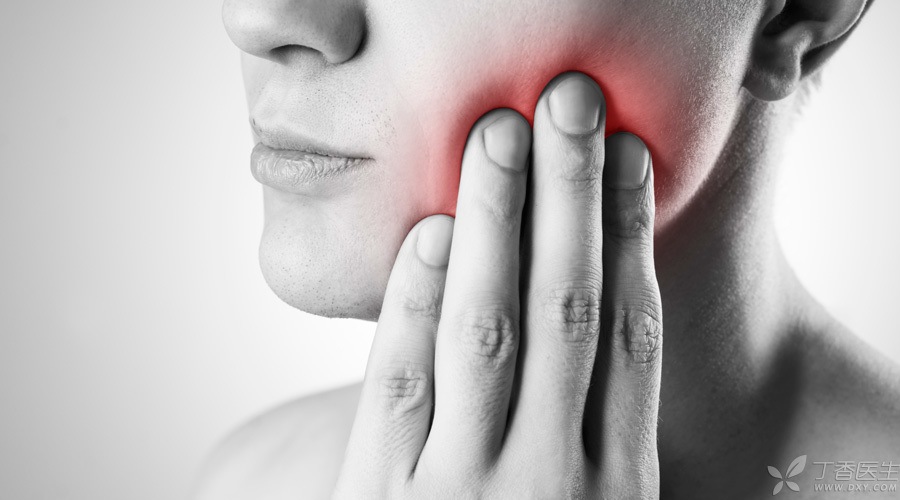
At two o’clock at night, a messy and hurried footsteps broke the peace of the night. A haggard-faced elderly female patient with great pain and helplessness written on her face came to the neurological emergency room.
I saw her gently covering her right face with one hand and rubbing her skirt tightly with the other hand. The covered face was red and swollen, and saliva flowed out of the mouth from time to time.
I hastily asked: [Hello, may I ask why you are not feeling well? ]
The patient grinned softly and said in a low and vague voice: “Doctor, my toothache here is like an electric drill, for a while.”
The son of the patient went on to say: “My mother has been suffering from this disease for many years. It doesn’t matter to take ordinary painkillers. When it’s okay, it’s fine. When it comes to committing crimes, it doesn’t want to eat or tea. Sometimes brushing teeth, drinking cold water or eating can suddenly induce pain.]
After asking about the medical history, physical examination and imaging examination ruled out the tumor, I initially considered that the old lady suffered from trigeminal neuralgia.
What is trigeminal neuralgia?
Trigeminal nerve is the nerve that manages the sensation of face, oral cavity and nasal cavity and the movement of masticatory muscles.
If facial pain occurs and the pain has the following characteristics:
-
Repeated onset of transient severe pain, can be electric shock-like, knife-like, tear-like pain, multiple sudden stop, each time can last for several seconds to tens of seconds;
-
Completely normal when not seizure;
-
Eating, washing your face, brushing your teeth, drinking cold water, or even accidentally touching a certain area of your face can induce pain attacks.
If you have the above three items, it is time for you to go into the neurologist’s office for help.
When seeing a doctor, doctors usually do the following things:
1. Detailed medical history, such as:
- The first time the pain began was in what. The main reason is where the pain occurs and how often it occurs. When it hurts, it hurts for a while, or does it last for a while, and how long does it hurt each time? Is it electric shock-like pain, distending pain or other pain methods? Whether there is an inducing cause, or whether it will hurt for no reason; … …
2. Systematic medical examination
It is mainly to understand your general physical condition. Some physical examinations will be carried out specifically, which may make you close your eyes, smile, stick out your tongue, and even prick your face with a small needle. It may hurt a little, but this is just to make sure that you feel any less.
STEP 3 Open some auxiliary checks
Such as blood routine, blood biochemistry, head MRI or trigeminal nerve root TOF-MRA, etc.
Next, in the face of numerous information, doctors will conduct a fierce brainstorming to determine three problems.
First, is it trigeminal neuralgia?
Although trigeminal neuralgia is easy to identify, some diseases like filling [big tail wolf], such as toothache, glossopharyngeal neuralgia, trigeminal neuritis, etc.
Of course, I also met patients who mistook trigeminal neuralgia for toothache and went to the Department of Stomatology for tooth extraction, but only after extraction did I find that the pain was not relieved and finally came to the Department of Neurology for treatment.
Second, what type of trigeminal neuralgia is it?
According to the etiology, trigeminal neuralgia can be divided into:
- Primary trigeminal neuralgia, that is, no clear cause can be found; Secondary trigeminal neuralgia with organic lesions.
Doctors will identify the cause of the disease through imaging examination. If the examination results are not wrong, it is considered as primary trigeminal neuralgia.
Three, trigeminal neuralgia how to treat?
Different types of pain mean different treatment plans.
1. Secondary trigeminal neuralgia
It is very important to find the initiator of secondary trigeminal neuralgia, such as tumors and arterial malformations. We usually perform surgery to exterminate it.
2. Primary trigeminal neuralgia
For primary trigeminal neuralgia, At present, its pathological mechanism is not completely clear, However, there is a relatively recognized interpretation as [leakage theory]: That is, the blood vessels in the brain compress the trigeminal nerve for a long time, resulting in damage to the root of the trigeminal nerve and [short circuit]. Perhaps this injury takes time, so trigeminal neuralgia is more common in adults after 40 years old, and because it may be the pain caused by electrical conduction short circuit in the nerve, some patients suffer from pain like overcurrent.
Primary trigeminal neuralgia is generally treated by the following methods:
- Medication: Carbamazepine or oxcarbazepine is preferred, This is a small magic medicine for treating trigeminal neuralgia. Reduce the frequency of its [short circuit], At the same time, it is supplemented by drugs such as analgesic, circulation improvement and nerve nutrition. A multi-pronged approach. Surgical therapy: Craniotomy microvascular decompression is currently the best treatment method with the longest remission time. Most of them are used when drug therapy is ineffective. The principle of surgery is roughly to separate blood vessels from the trigeminal nerve that leaks electricity so that it is no longer short-circuited. It can be said that it points directly to the cause of the disease, so the effect is very good. Other: such as gamma knife therapy, radio frequency hot melt semilunar ganglion and other treatment methods.
Trigeminal neuralgia is known as [the world’s first pain], which makes patients miserable. However, the development of medicine in recent years has enabled some patients to benefit from drugs or surgery and remove the pain.
It is hoped that more patients can enter the hospital to receive scientific treatment, stop superstitious belief in folk remedies, ancestral secret recipes and other unorthodox ways, and get rid of the [painful] bitter years of tea and rice as soon as possible.
